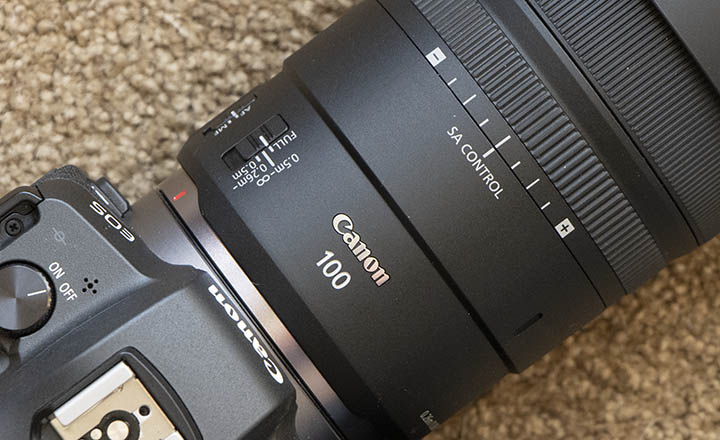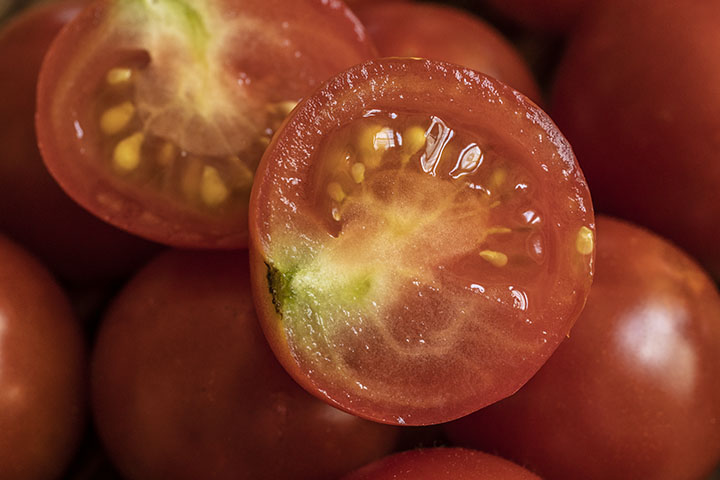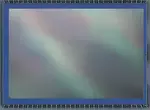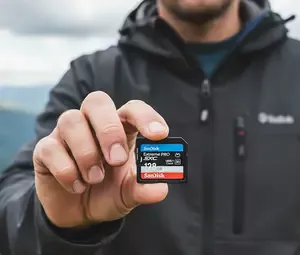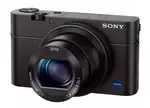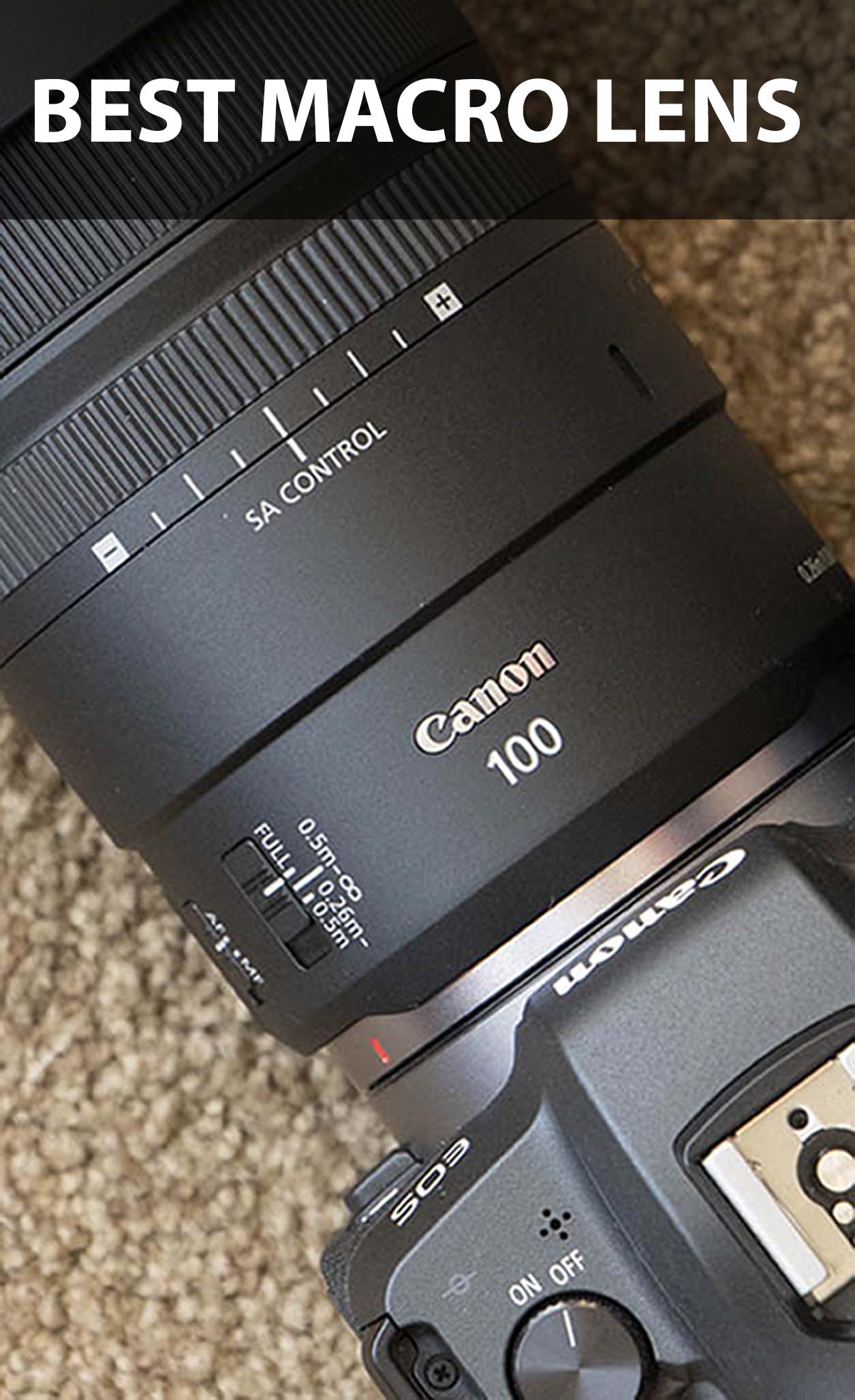Canon RF 100mm Macro Lens Test
Here it is! A review of the results of my Canon RF 100mm lens test. If you've read any of my other lens reviews, you know I'm generally not a big fan of the super technical lens tests that lens testing geeks like to do.
Don't get me wrong. Lens testers are valuable and technical lens tests do help with evaluations and they do provide desired knowledge as well as fodder for camera equipment forums.
I'm usually more interested in testing the performance of a lens out in the field. I want to know if it take sharp photos, whether there are any significant chromatic aberrations or any spatial distortions noticeable in my photos.
I like to use a lens the way it was designed to be used, taking everyday photos of interesting subjects and not investing too much time photographing test targets.
How about you? Does the MTF graph of the Canon RF Macro lens shown below help you decide if you should buy one?
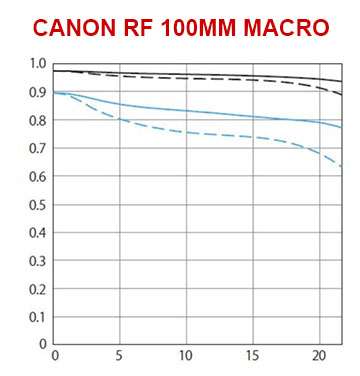 RF 100mm Macro Lens
RF 100mm Macro LensMTF Modulation Transfer Function
WHY EVEN DO THE TECHNICAL LENS TESTS?
For one, I like to make sure I got a good copy. ALL camera lens-making companies, like Canon Nikon, Sony, Fuji, and Tamron included, can occasionally allow a dud lens slip through the quality control system.
Now, with all that said, let's dive into the test results on my copy of the Canon RF 100mm f/2.8 Macro IS Lens. The spatial distortion test can be done at any of several different distances.
Make sure you see the other posts on the RF 100mm macro lens that will help you evaluate this lens. The links are at the end of this article, below my signature
Test #1 - Spatial Distortions
Prime lenses, especially normal and moderate prime, telephoto lenses almost never have an issue with distortion. Pin cushion effect and barrel distortion are more typical of defects that occur with zoom lenses.
My super ease, but valid, real world method to take a quick look for pin cushion and barrel distortion is to photograph this brick wall which is only about a football field length from my front door.
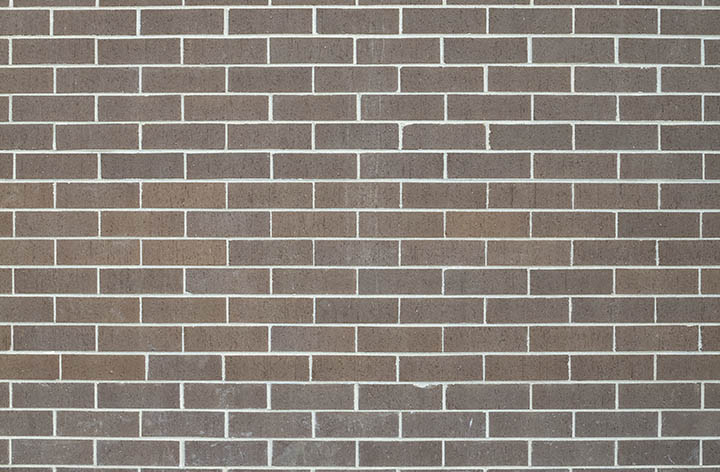 As expected, the RF 100mm macro has no pincushion or barrel distortions!
As expected, the RF 100mm macro has no pincushion or barrel distortions!The brick wall is not a perfectly uniform pattern, but it is a good subject to photograph for revealing pin cushion and barrel distortions. The wall is always there for me to test a lens anytime I want. The key point is to use a tripod and to make sure you're shooting perfectly level.
Test #2 - Chromatic Aberrations
How does the RF 100mm lens perform with chromatic aberrations? The best way too test is to pick a subject with small super high contrasty areas.
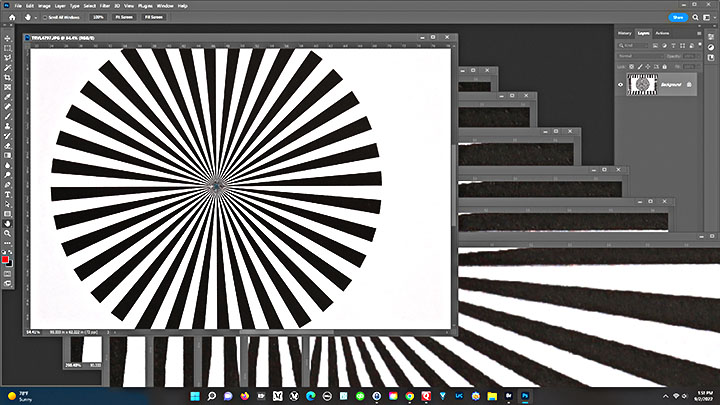 Screen shot of pixel peeping in Photoshop.
Screen shot of pixel peeping in Photoshop.I tested the RF 100mm lens sharpness at 7 different apertures
If you don't have a target to use like the one above, you can photograph bare tree branch limbs against a bright sky, or the edge of a building against a bright sky to get a good practical test for chromatic aberrations and sharpness in your lens.
Test #3 - SHARPNESS
It's likely the number one question you and other photographers want to know more than anything else is if the Canon RF 100m Macro f/2.8L IS Lens is sharp. Usually lenses have the sharpest image when the lens is stopped down 2 or 3 stops from wide open. In the case of the RF 100mm f/2.8, this is what my tests confirmed.
The RF 100mm macro lens is very sharp. Whether it's a distant object or a close-up macro image, the lens gives you sharp image. Sharpness tests using a high contrast test target resulted in no significant differences in sharpness from f/2.8 to f/11. At 200% magnification, pixel peeping gave a very slight edge to f/5.6 for sharpness. F/16 and f/22 resulted in a very minimal amount of softness at the outside corners.
To do the technical test of the sharpness of the Canon RF 100mm macro lens I took exact duplicate photos of a high contrast target at each standard f/stop, starting at f/2.8, and proceeding to f/4, f/5.6, f/8, f/11, f/16 and f/22.
You're also wondering what is the sweet spot for this lens-what its sharpest f/stop is. That's an easy test to perform, although it was splitting hairs when I did the comparison. The sharpest aperture for the RF 100mm macro lens was f/5.6, but the difference was minimal.
Test #4 - COLOR and contrast
I find the color reproduction of the RF 100mm macro lens to be accurate and true to life. More important to color renderings are the camera color balance you use and any adjustments you make post capture.
The modern day optical materials used in the new RF lenses produced good color and the right amount of contrast to both test targets and everyday subjects.
Test #5 - Image Stabilization
Image stabilization is not as effective when shooting subjects up close. Since the RF 100mm lens is a macro lens I decided to test it at close and super close distances. It performed very well with some handheld photos I did recently at a nearby conservatory. See the sample photos and my IS test results here.
RF 100MM Macro Summary
Macro lenses often have at least some distortion, but the Canon RF 100mm Macro f/2.8 L lens has virtually none. You'll get excellent image quality when the lens is focused at infinity all the way down to 1.4X macro. The RF 10mm lens is sharp wide open and only shows minimal diffraction lack of sharpness at f/16 and f/22.
Diffraction occurs at the smallest aperture that this lens closes down to, as it does with any other 100mm lens made, but it's still produces a sharp image. The RF version of the Canon 100mm lens performs even better than the already stellar performance of the popular EF version of this lens, particularly at the edges of the frame.
Have a blast. Shoot a Canon.
As an Amazon affiliate Canon Camera Geek receives a small commission from qualifying purchases, at NO added cost to you.

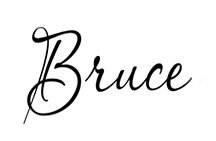
Bruce Lovelace is the publisher of Canon Camera Geek. Read more about him on the About Page. He also publishes how to articles and camera gear reviews at the Photography Tips website.
View some of Bruce's photos on Instagram and Flickr. Join the tribe of followers on YouTube. Bruce also runs photo workshops and provides 1 on 1 digital photography coaching.
Recent Articles
-
Is the Canon G1X Mark II Sensor Still Good in 2026?-Specs & Real Value
Dec 22, 25 12:36 PM
Size matters. The big difference in this high-end point and shoot is the Canon G1X Mark II Sensor -
Canon 16-35mm f4 Sample Images. The Canon 16-35 Lens Sharpness Test
Dec 22, 25 10:51 AM
Canon 16-35mm f/4L IS Real-World Sample Images & Sharpness Review -
Choose the Right Memory Card for Your Canon R6 Mark II: Speed And Size
Nov 05, 25 02:04 PM
R6 Mark II Memory Card -
Canon G1x Mark II vs G1X-Side By Side Comparison of Canon G1X Cameras
Oct 22, 25 08:35 AM
G1 X Mark II vs. G1 X: Is the New Version a HUGE Leap... Or a Massive Mistake? Canon responded to the criticisms of the original G1X. Canon G1X Mark II vs G1X -
Sony RX100 III vs G1x Mark II by Canon. Side by Side Comparison
Oct 22, 25 08:07 AM
It's another one of those epic camera battles, this time not the Canon vs Nikon but rather the RX100 III Vs G1X Mark II battle.
